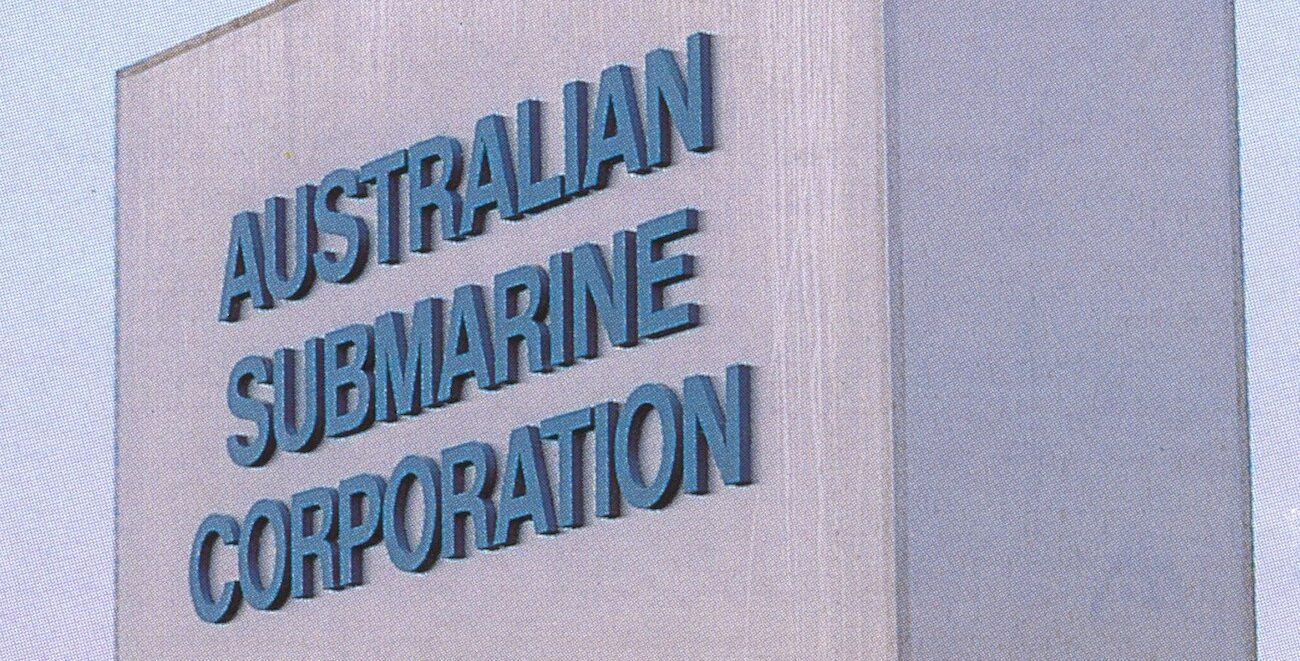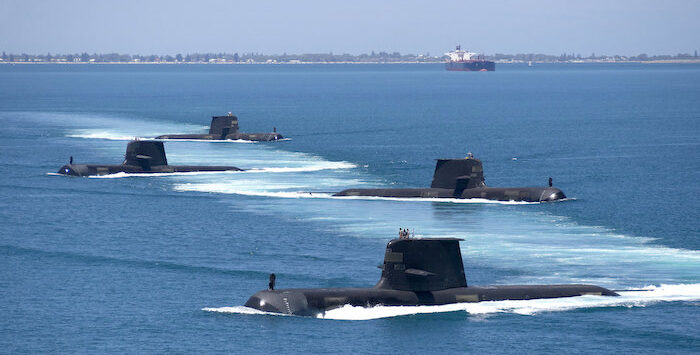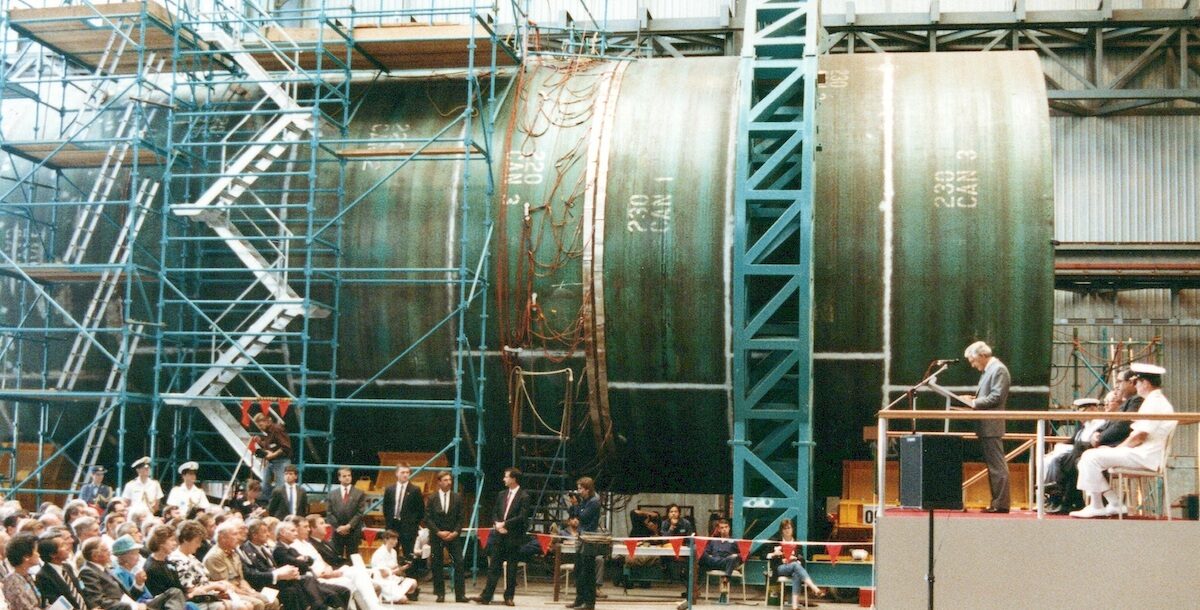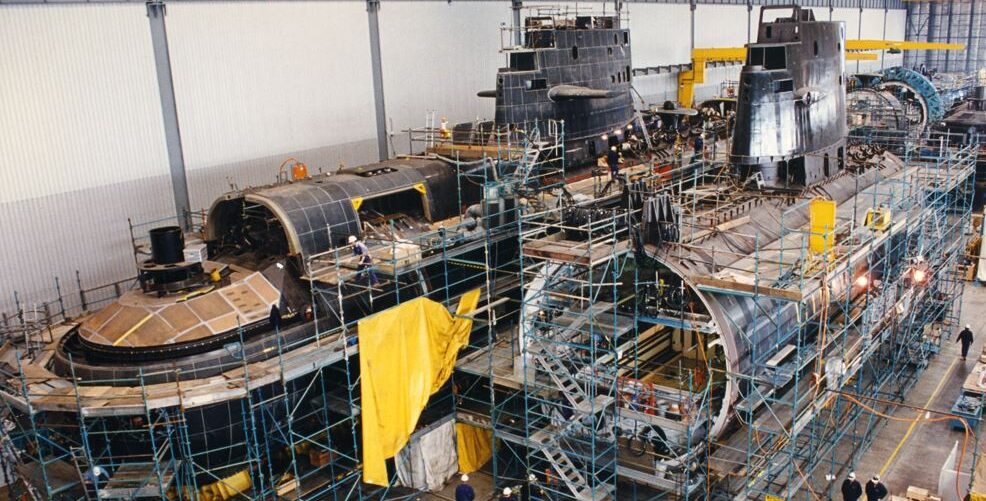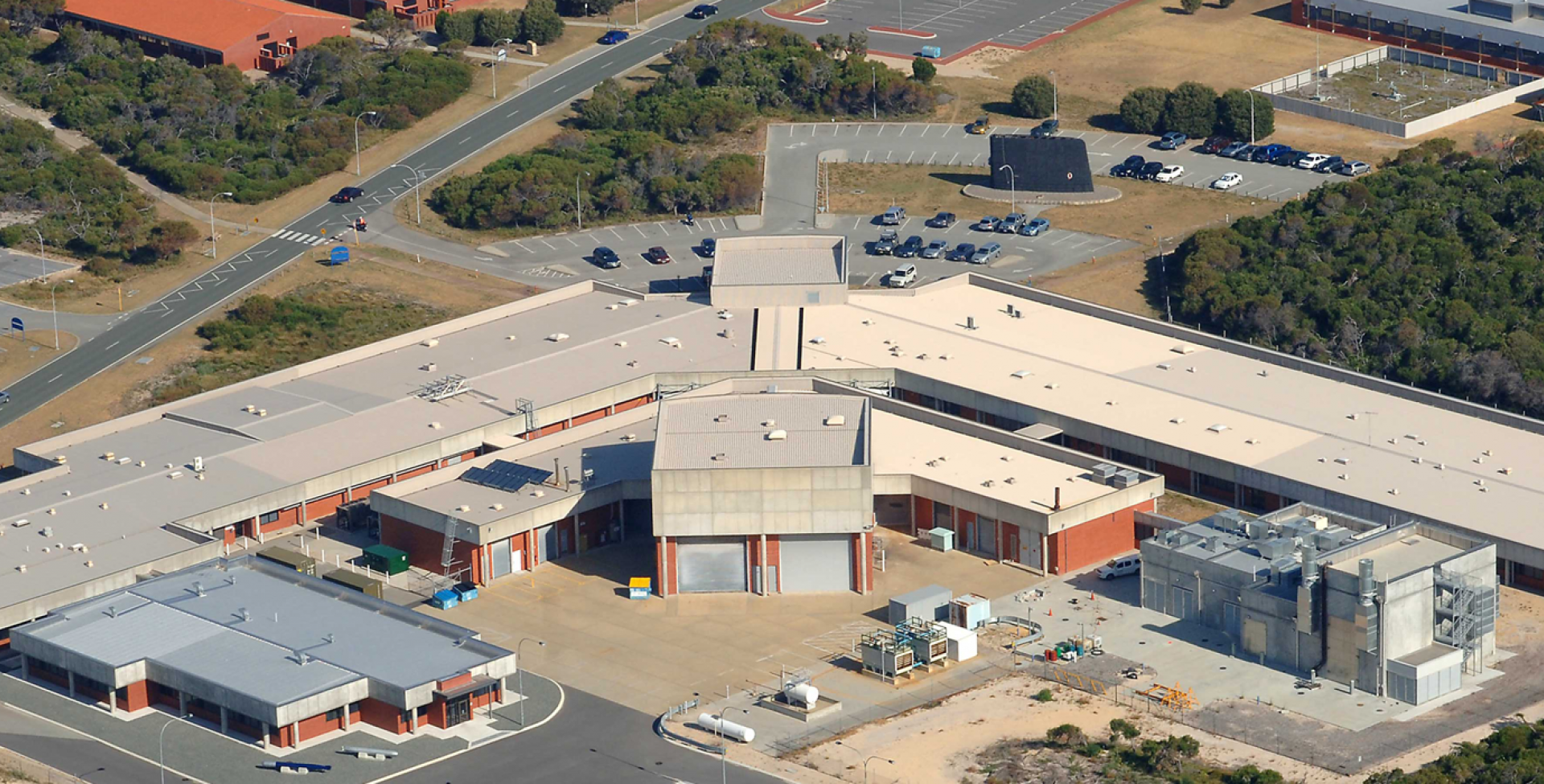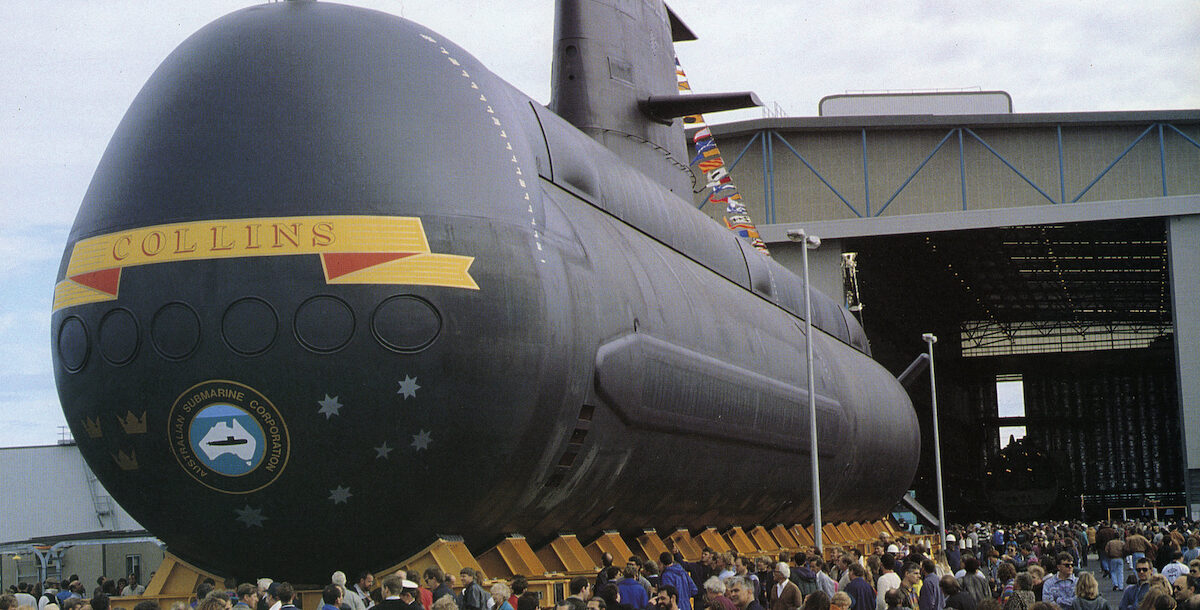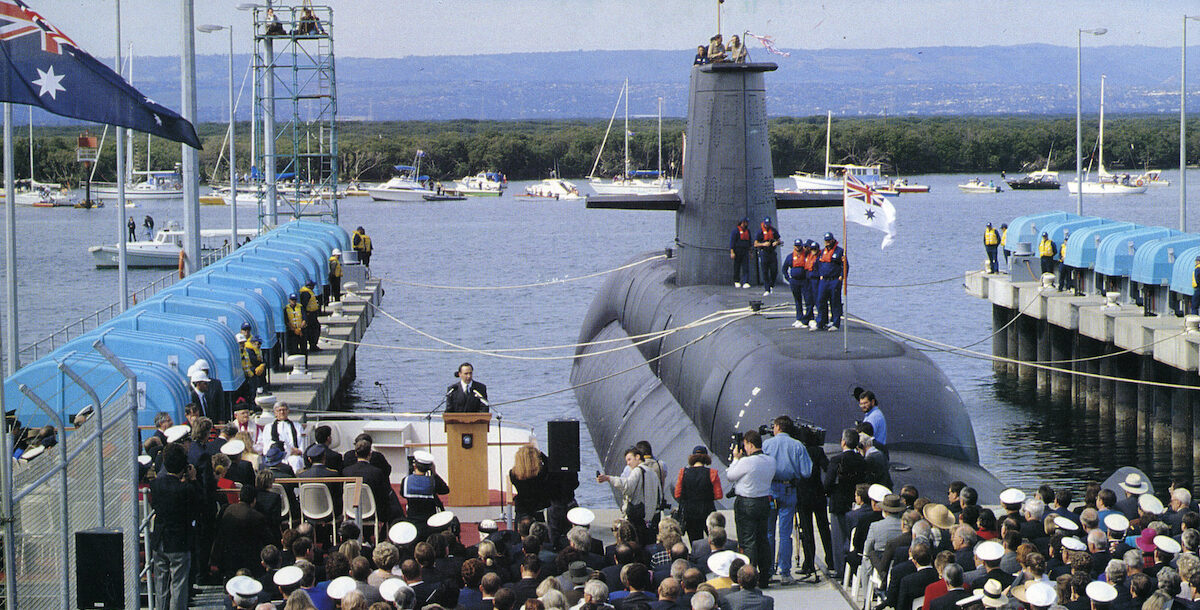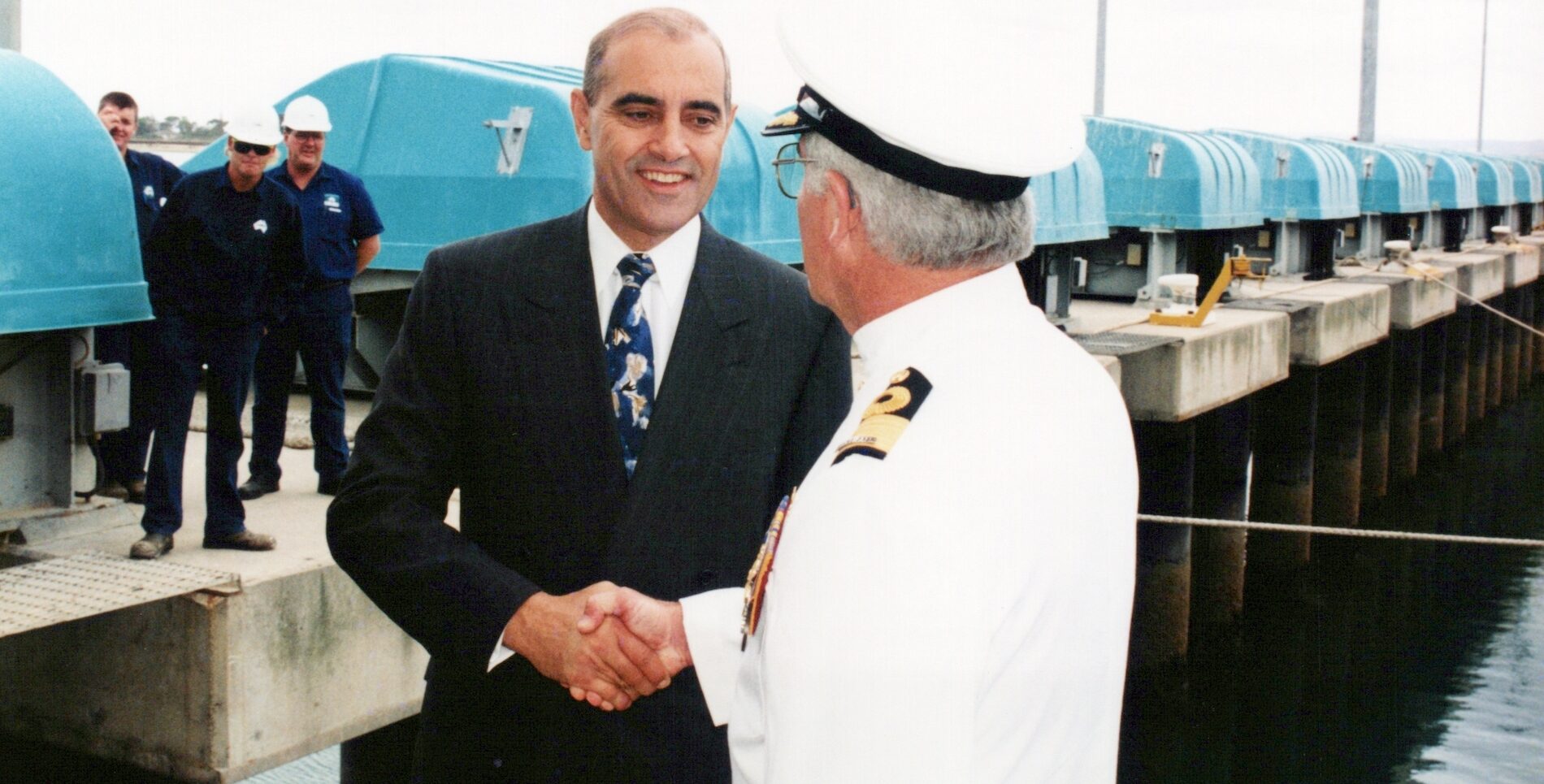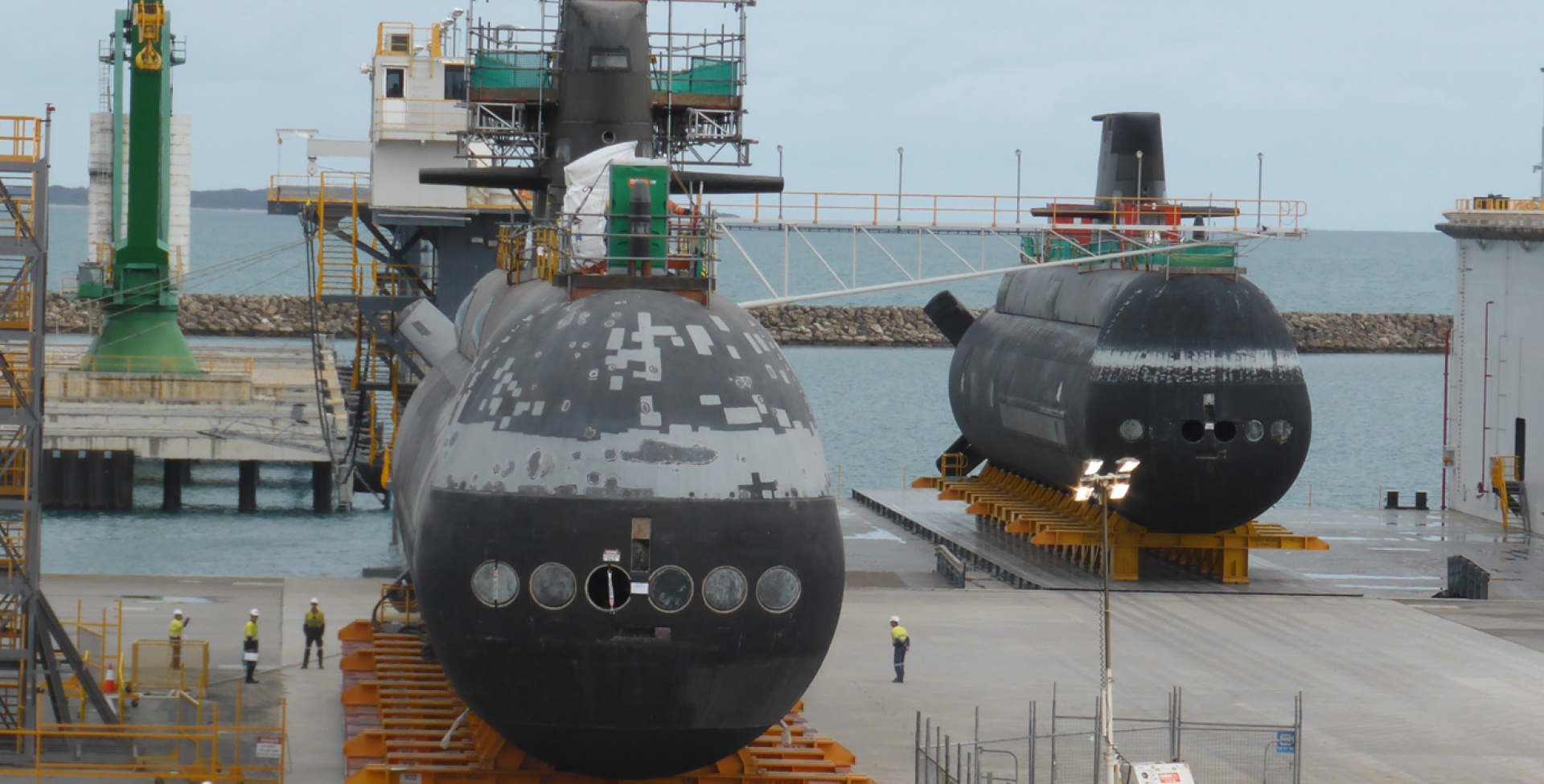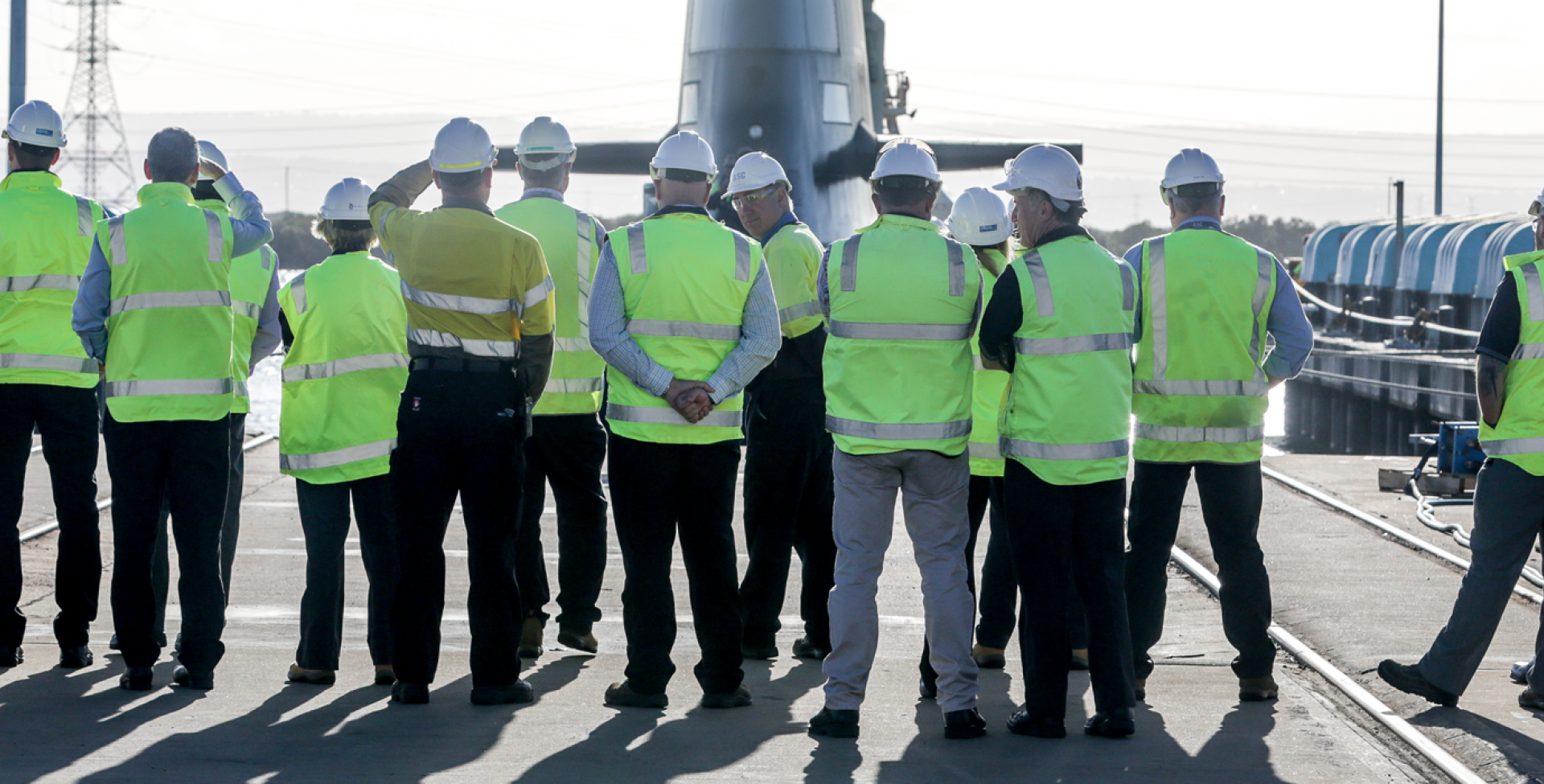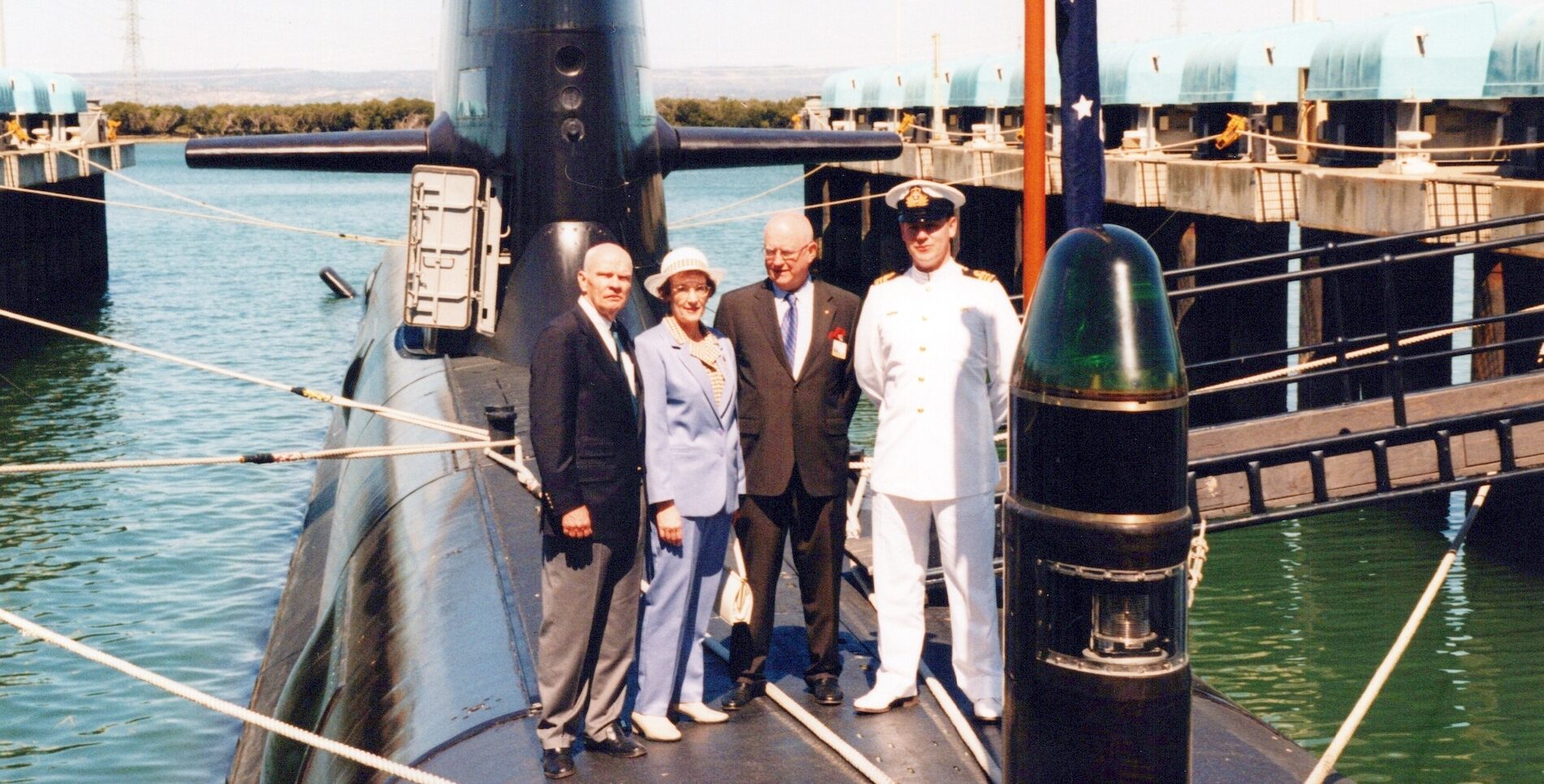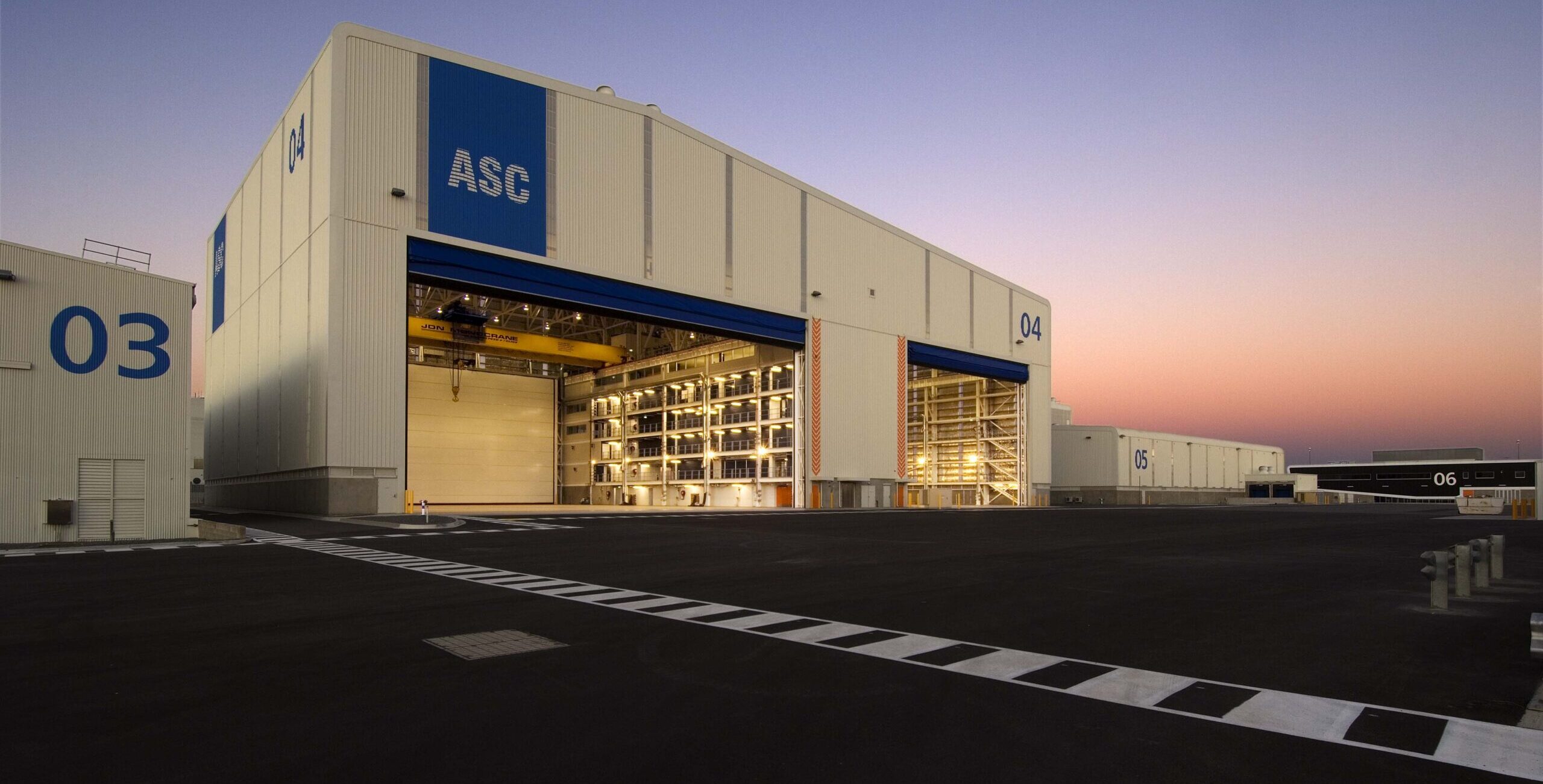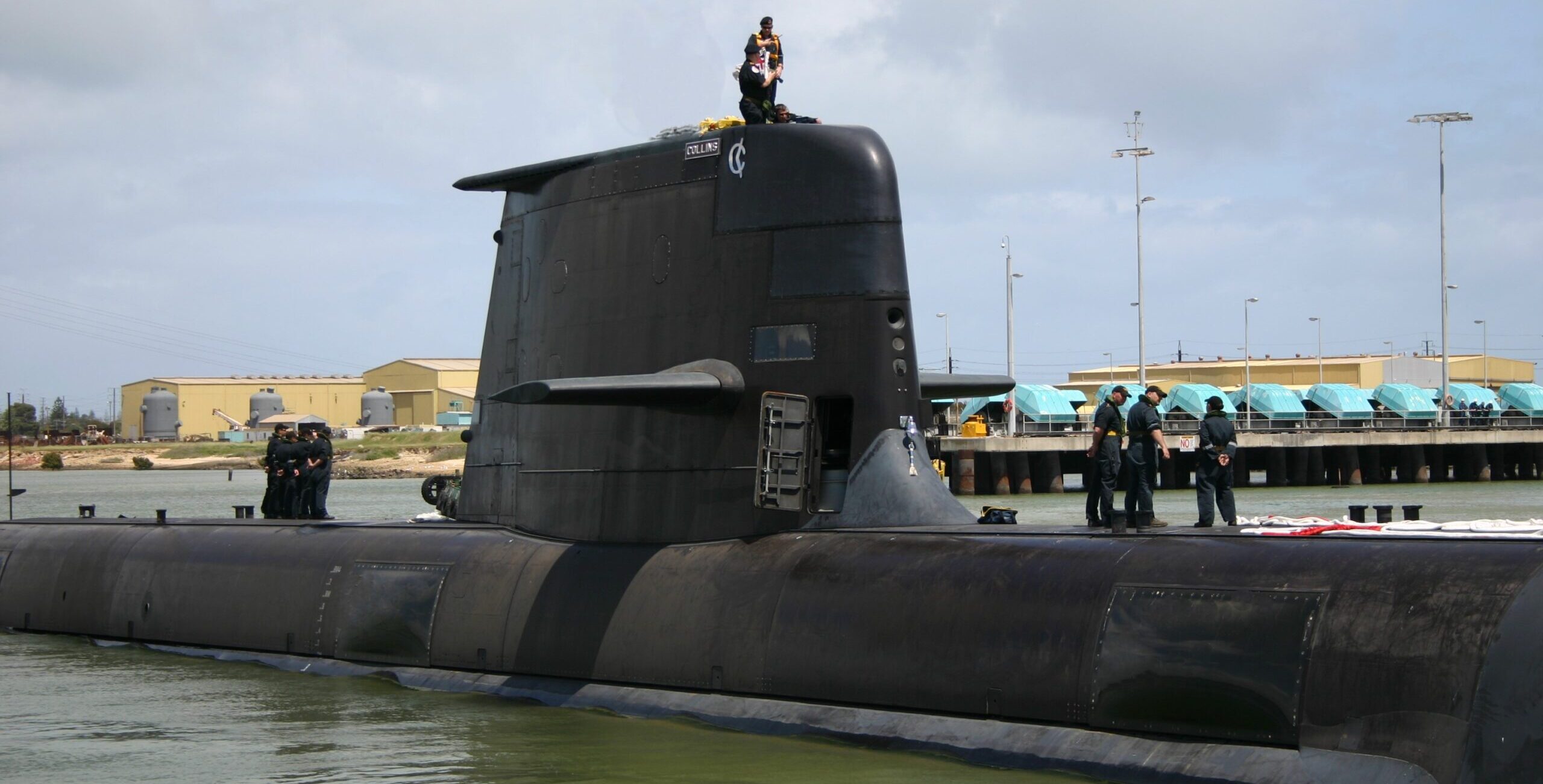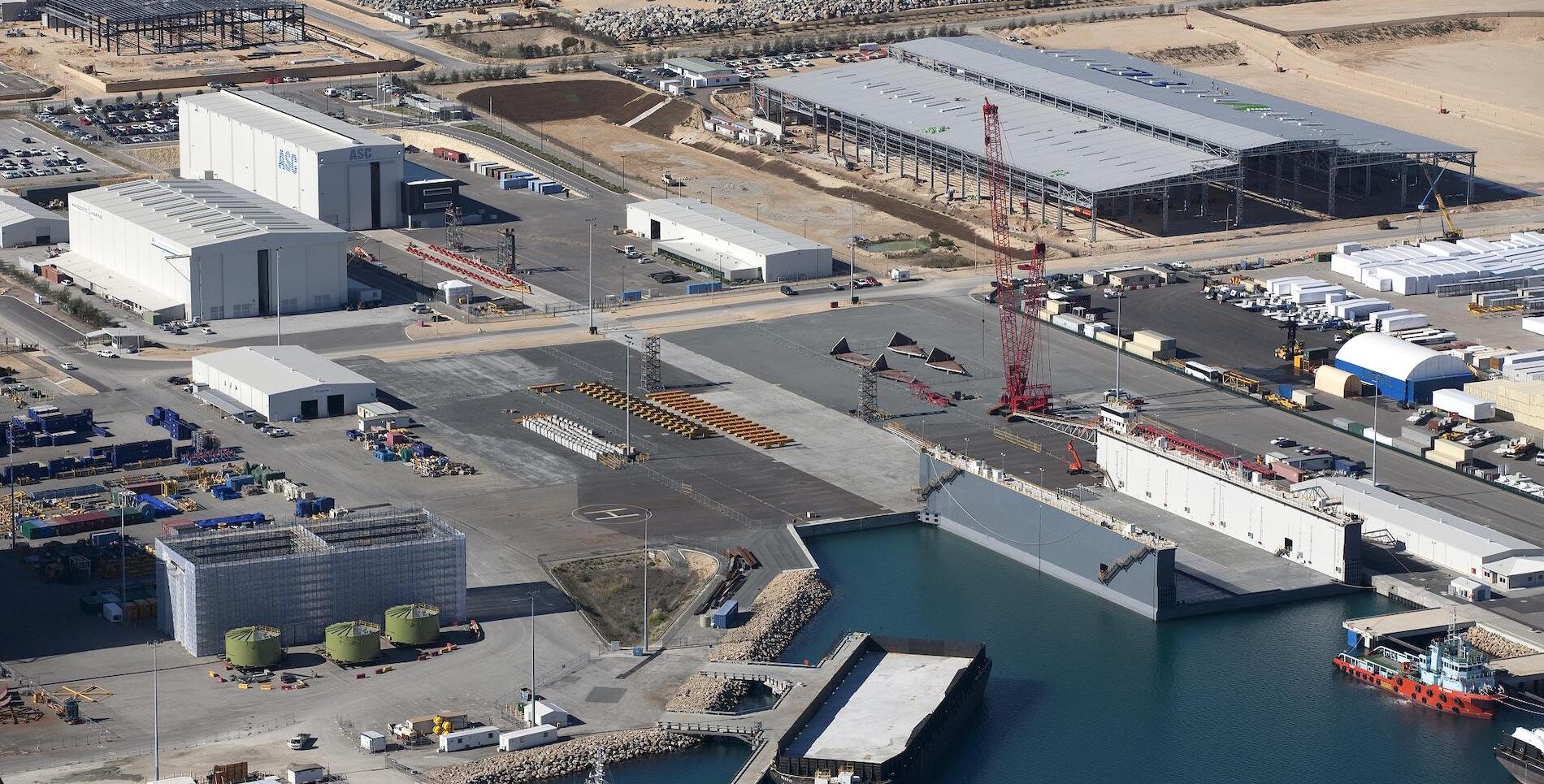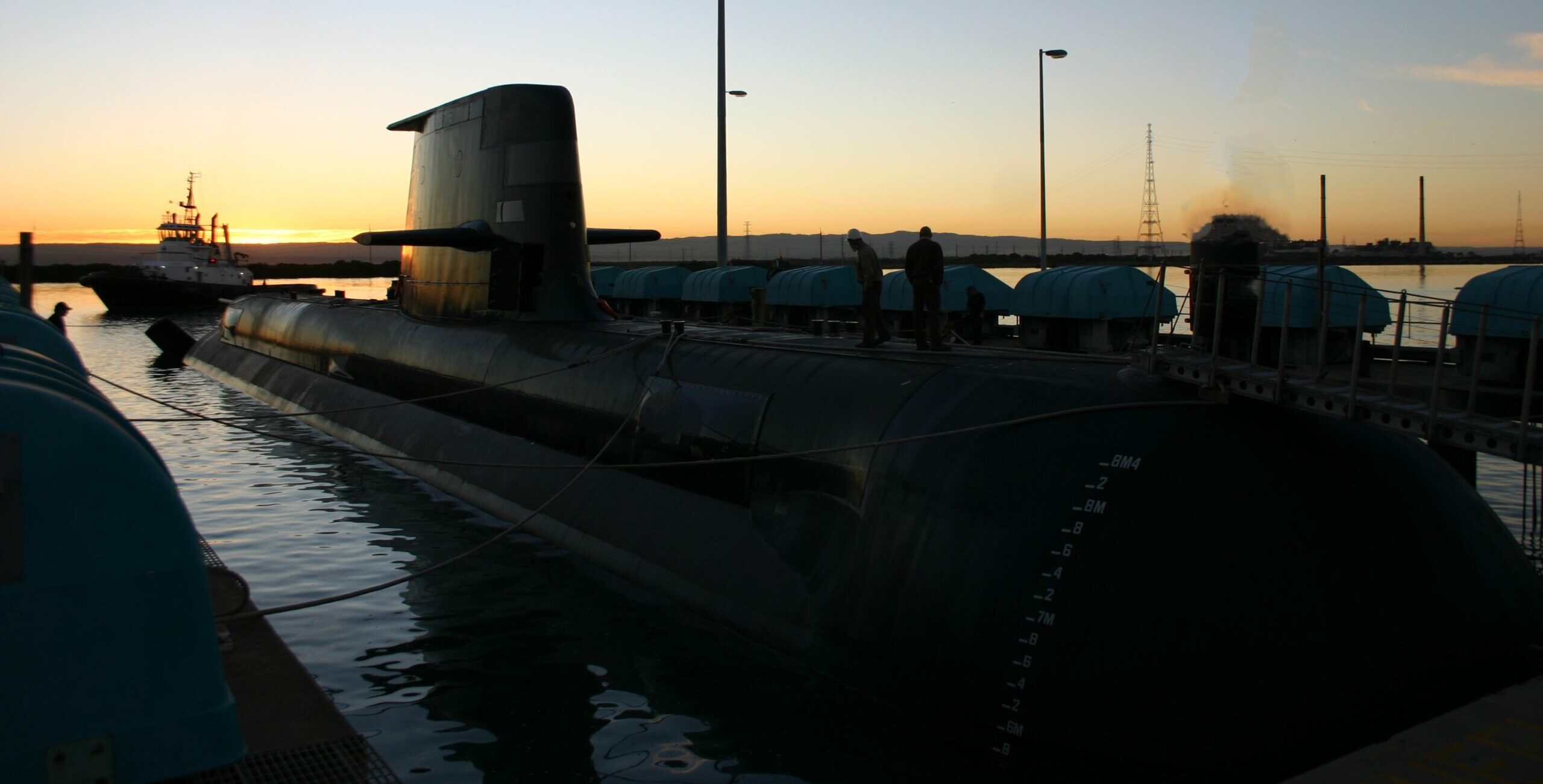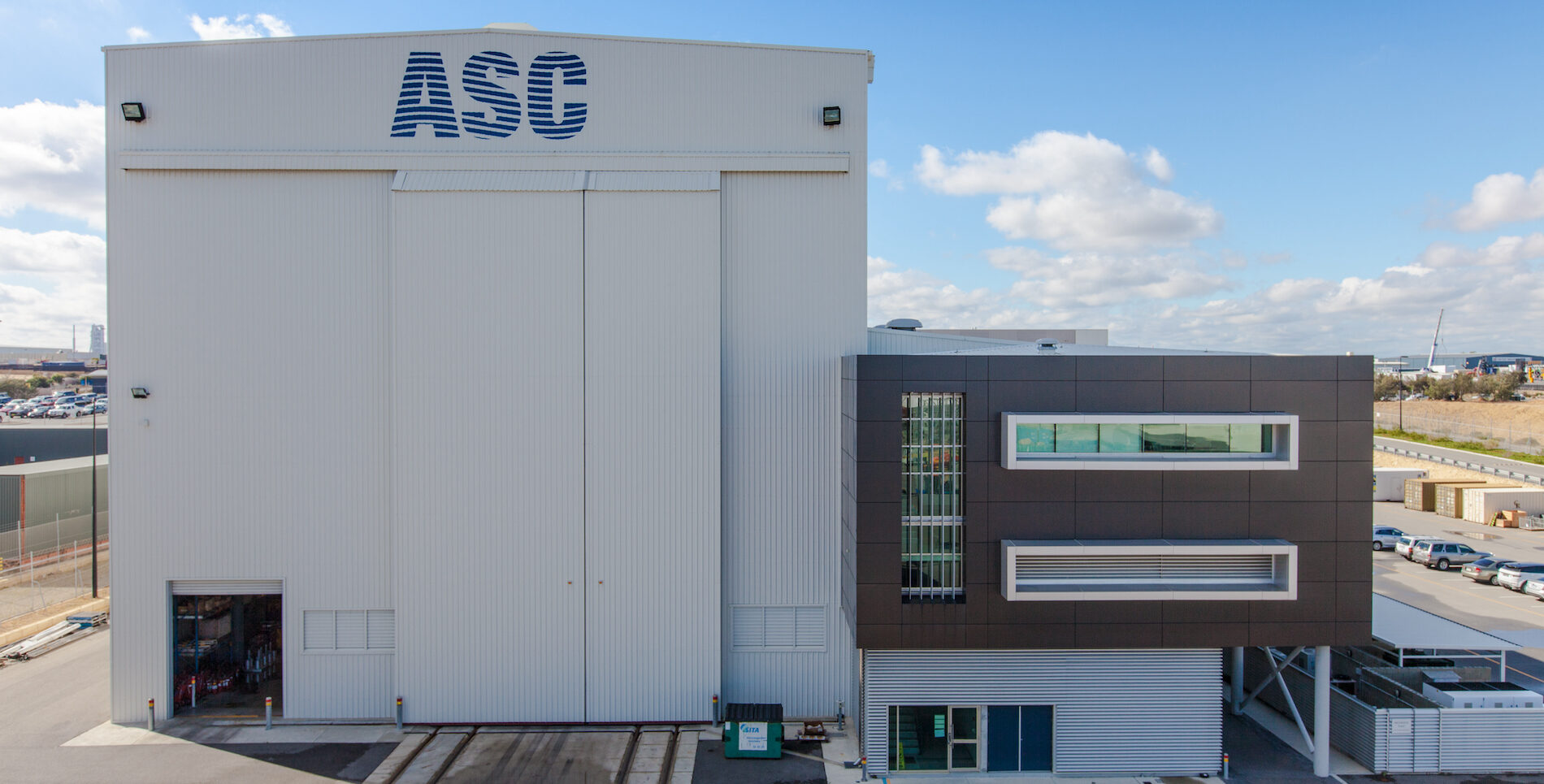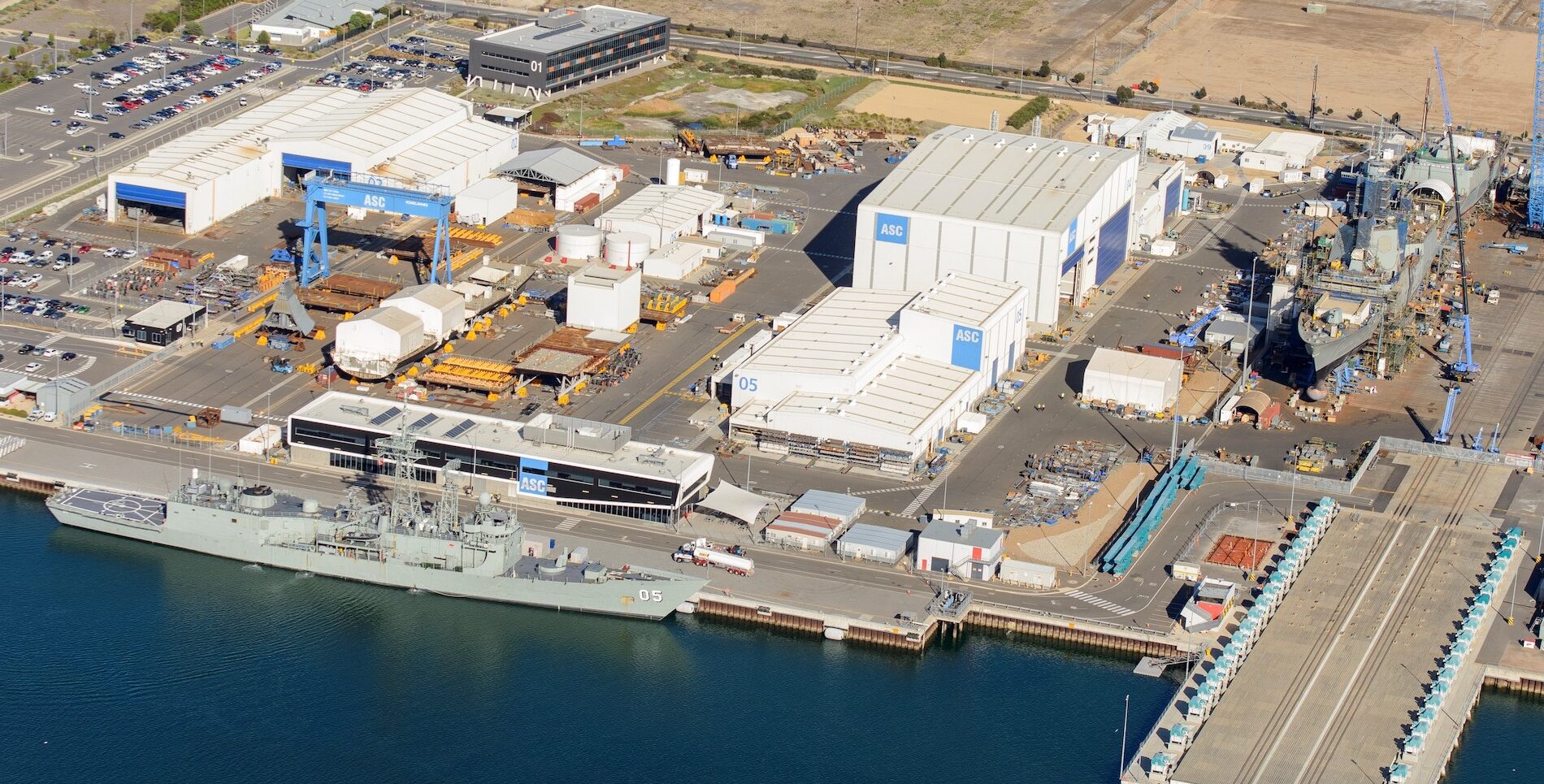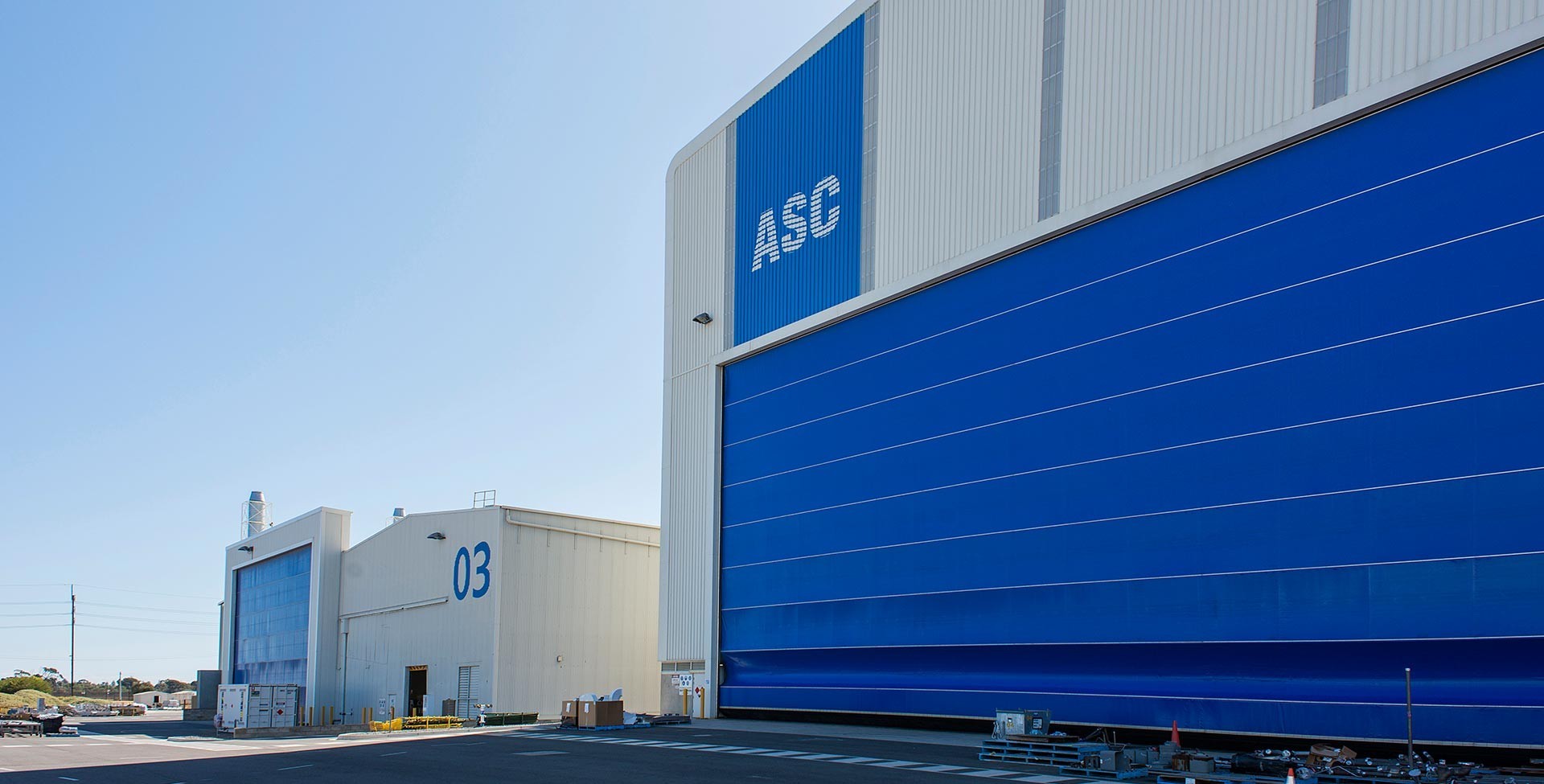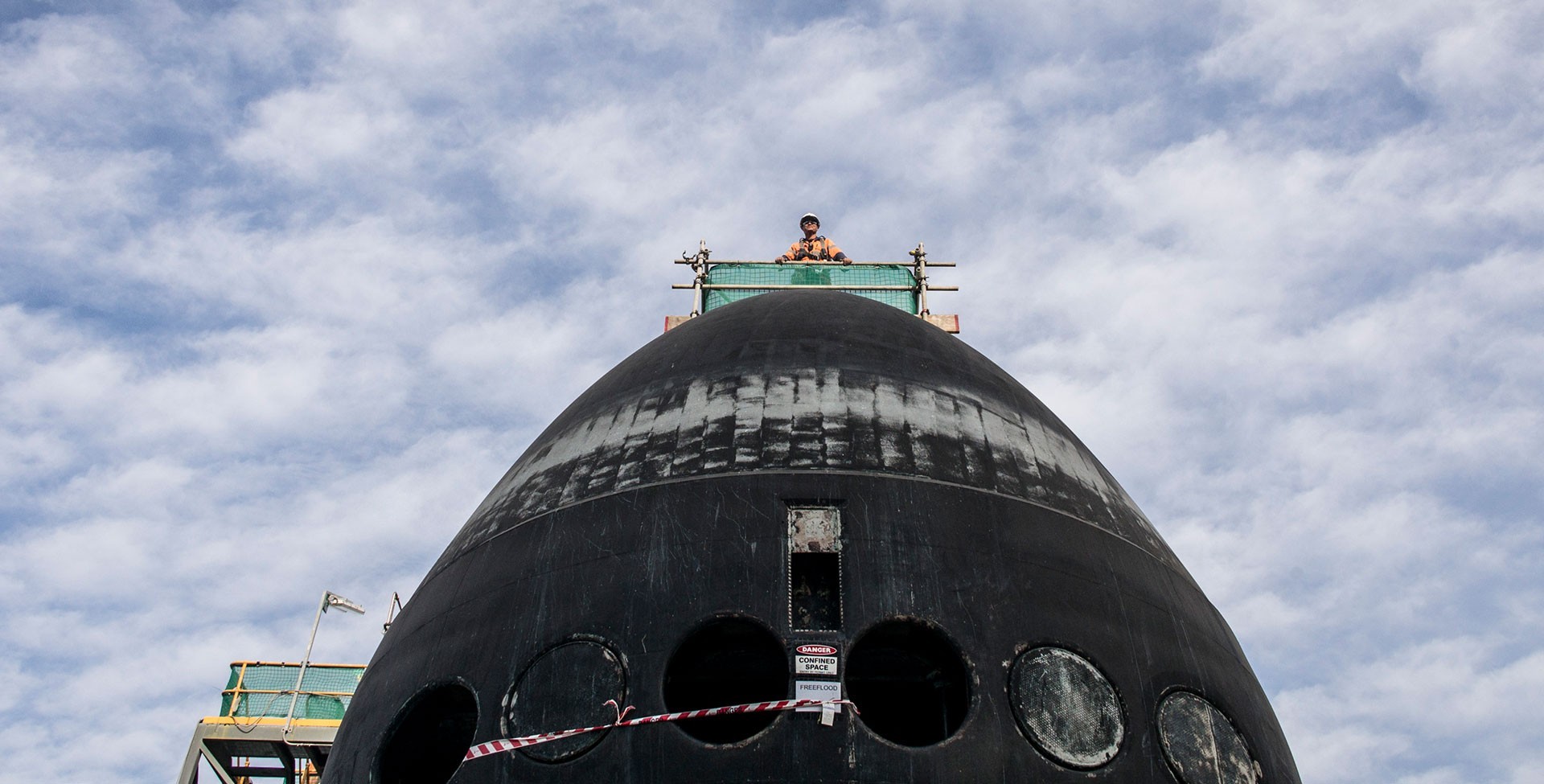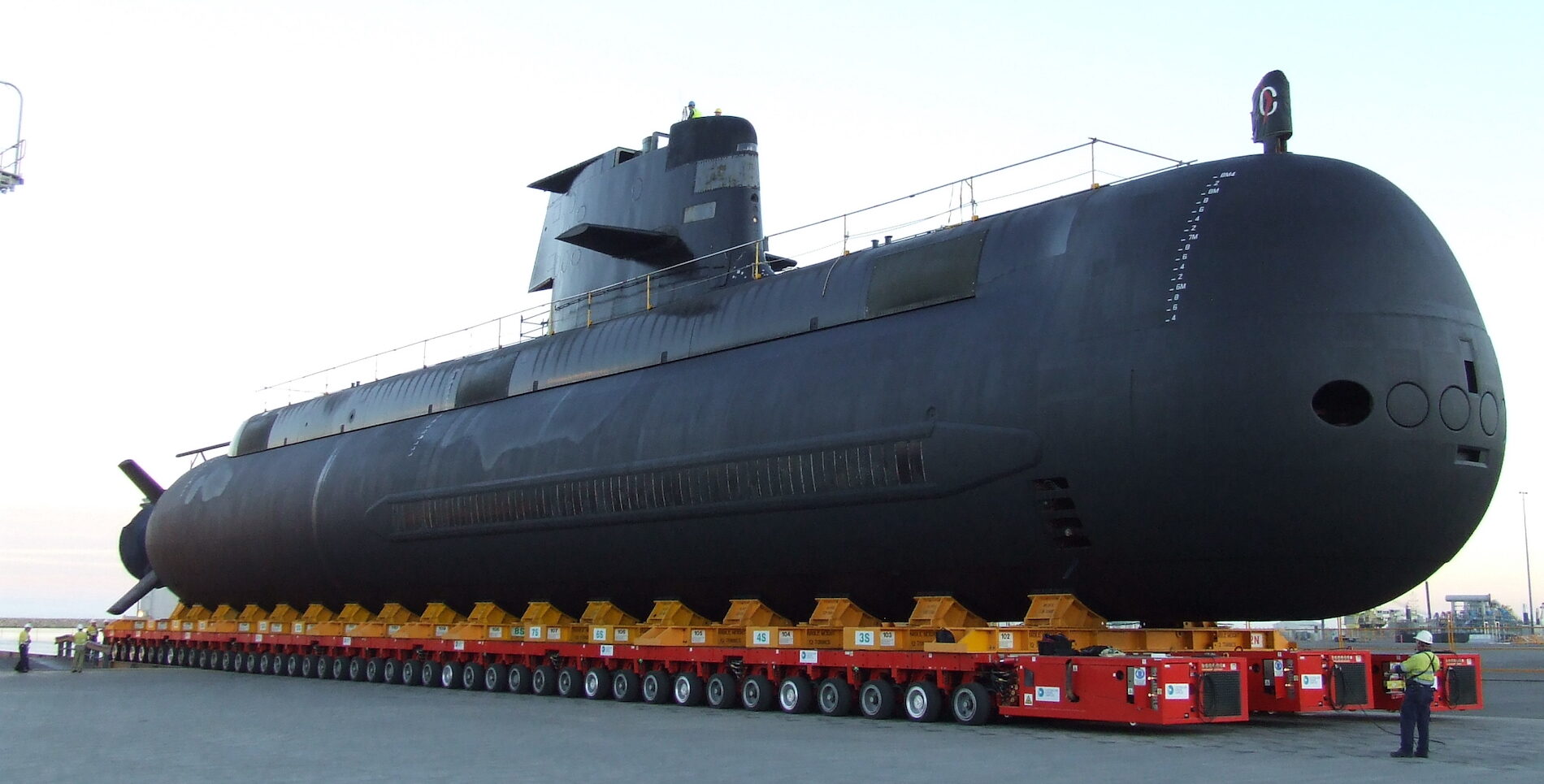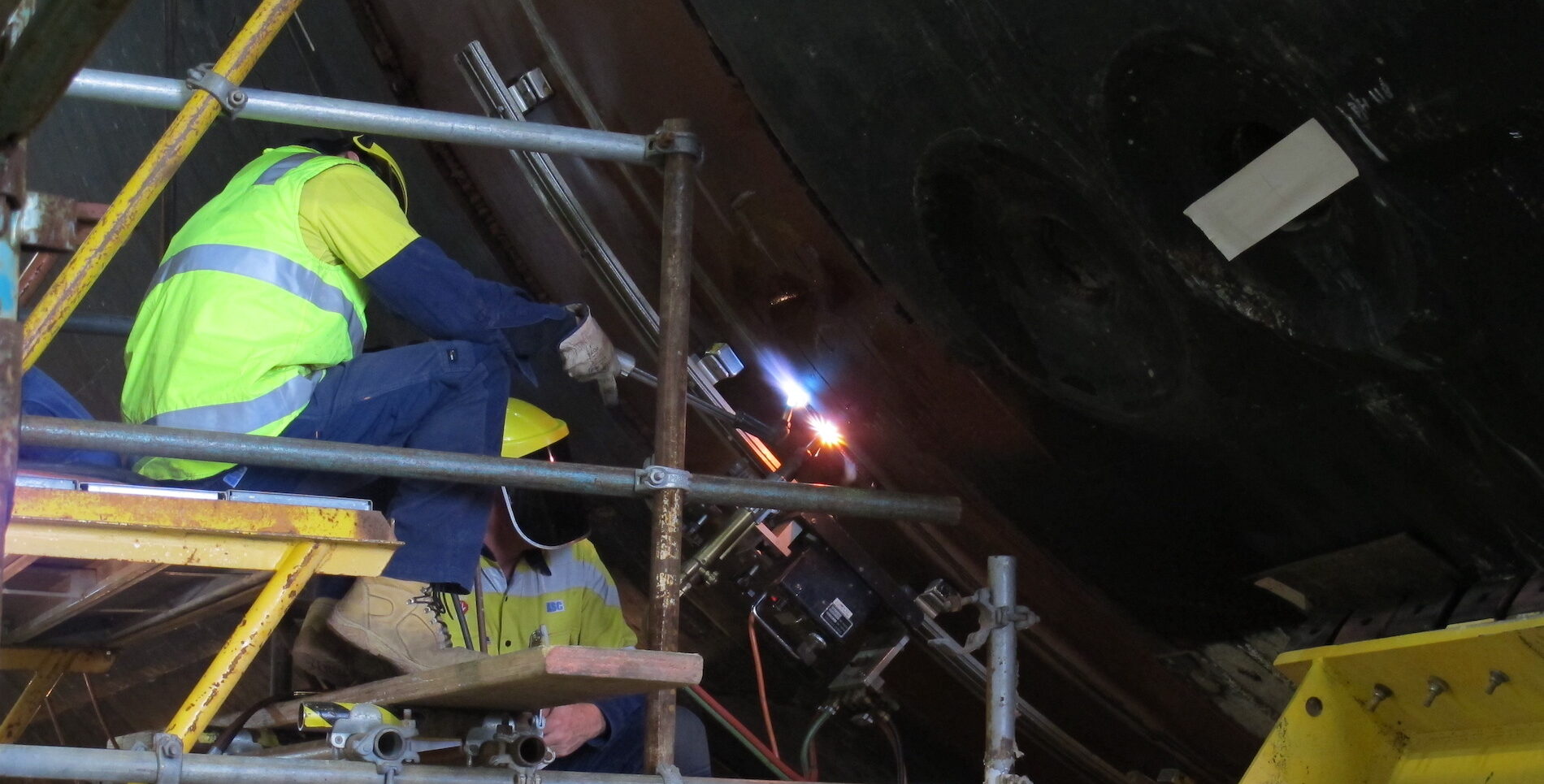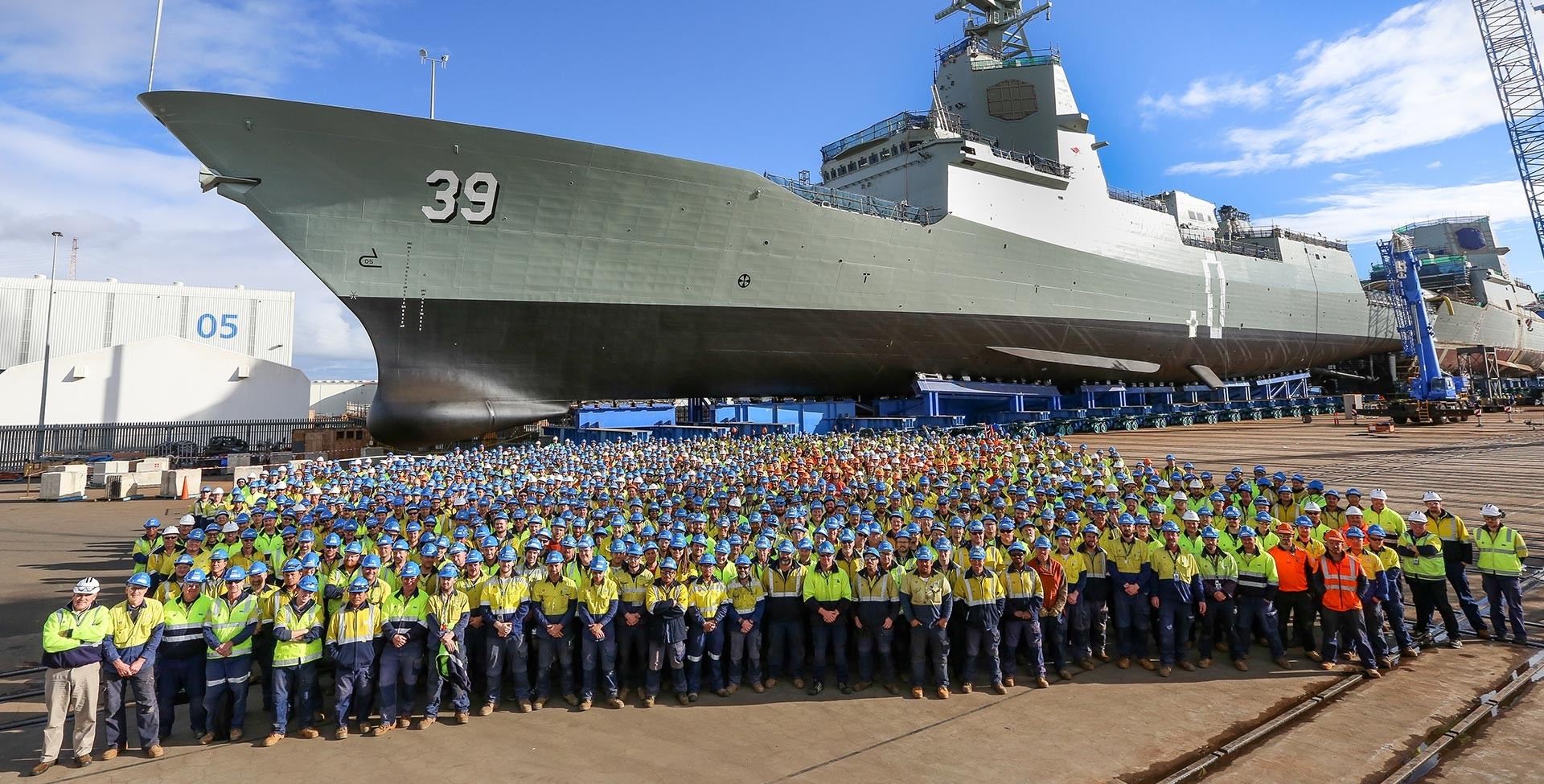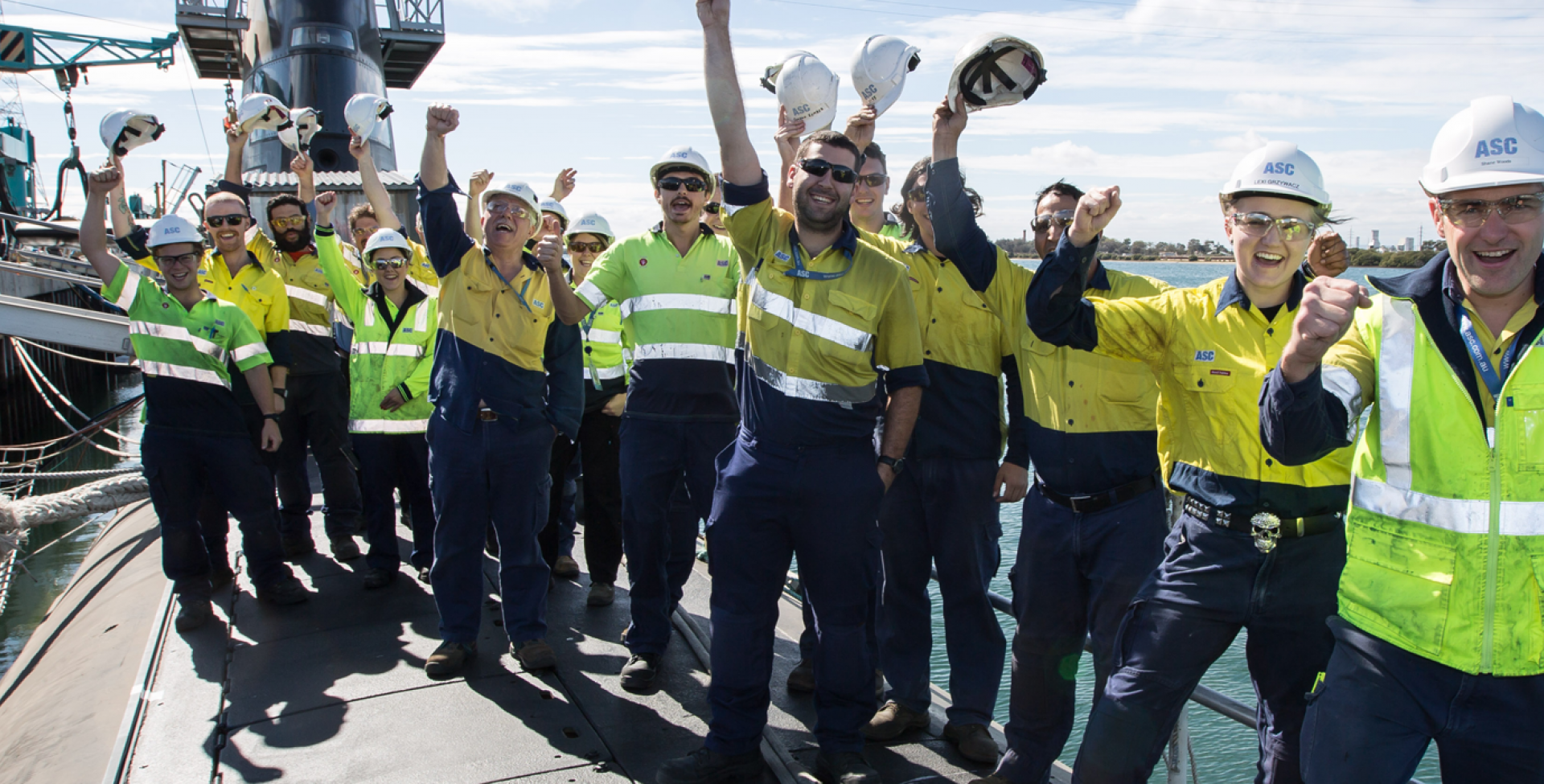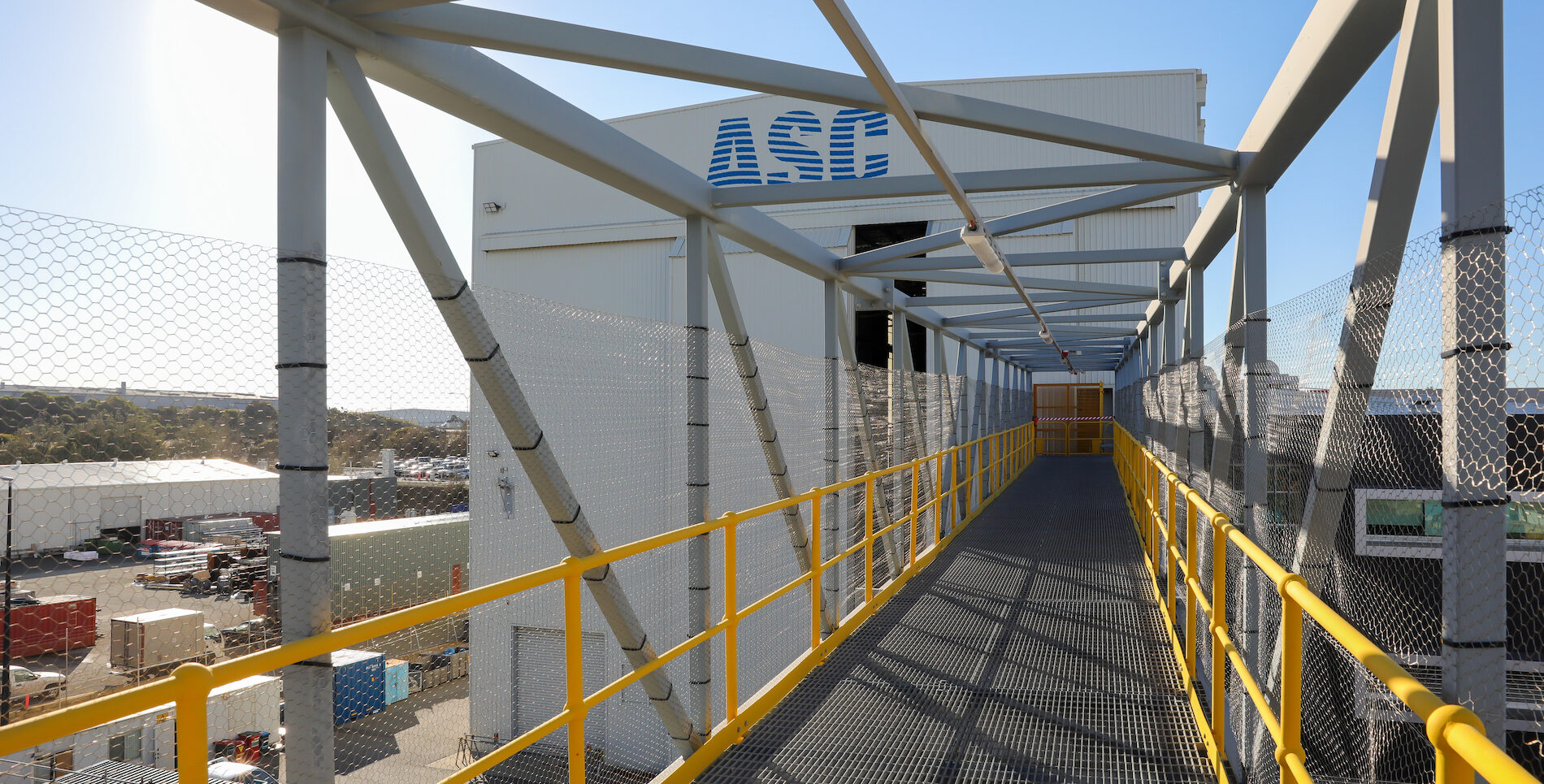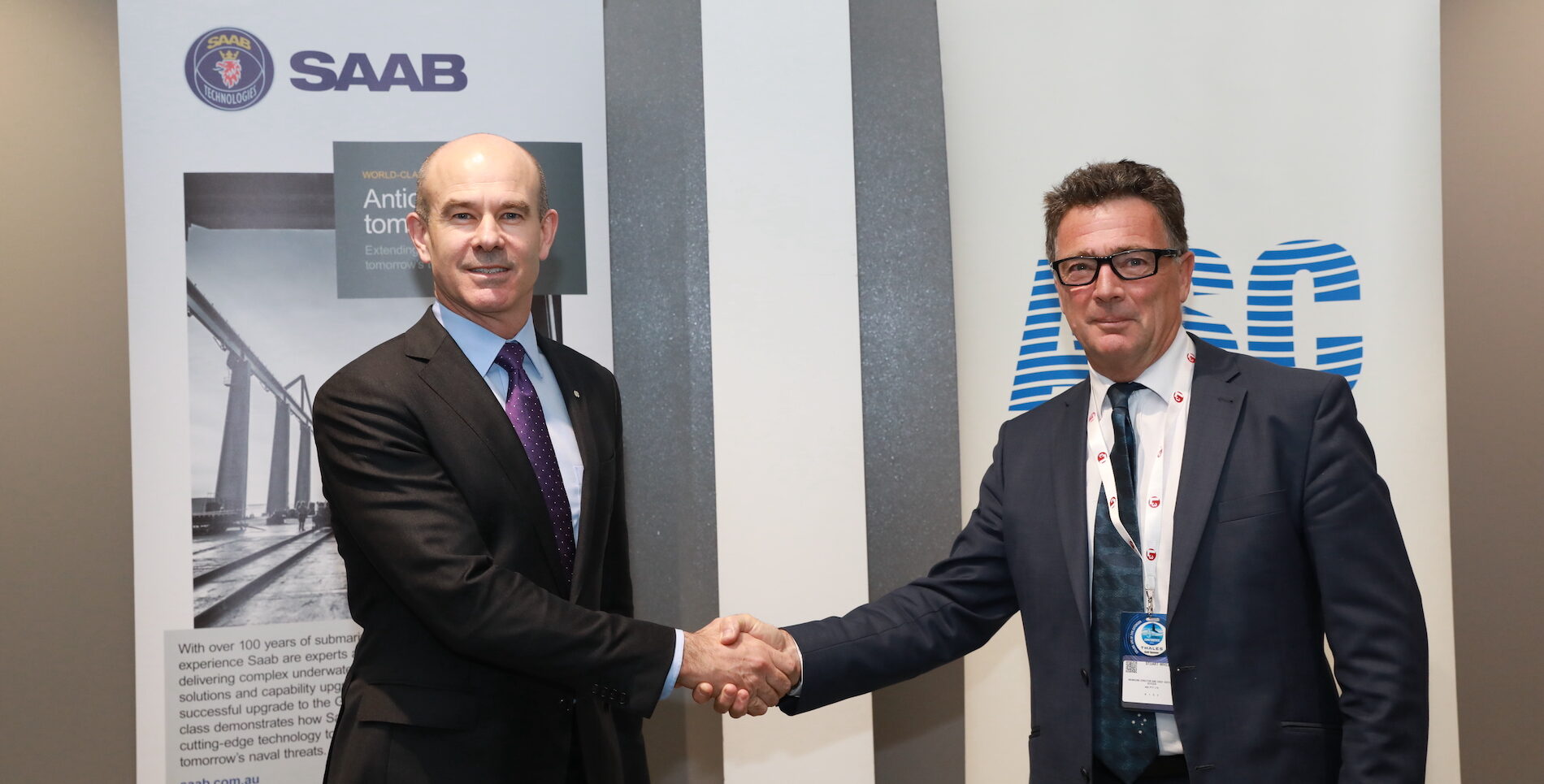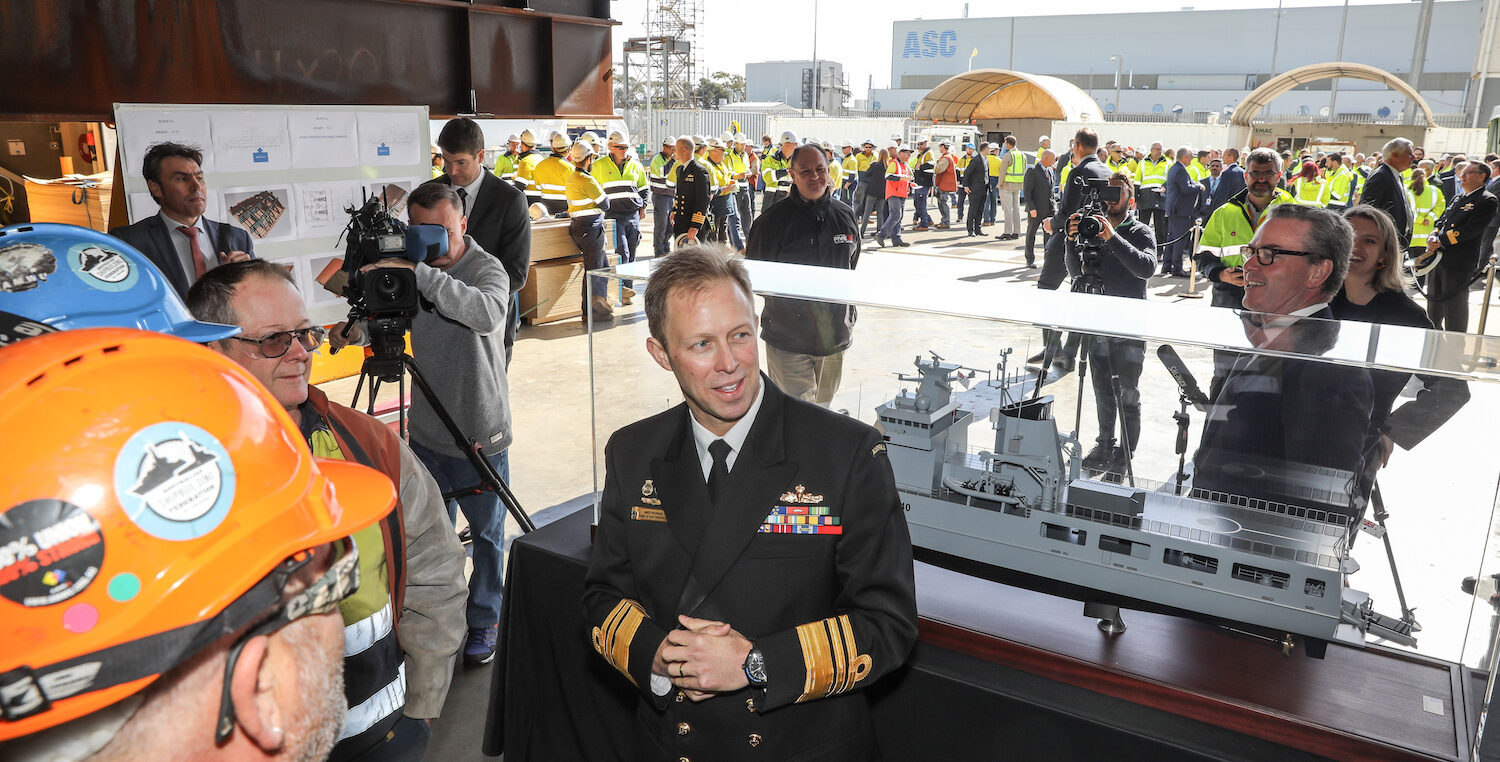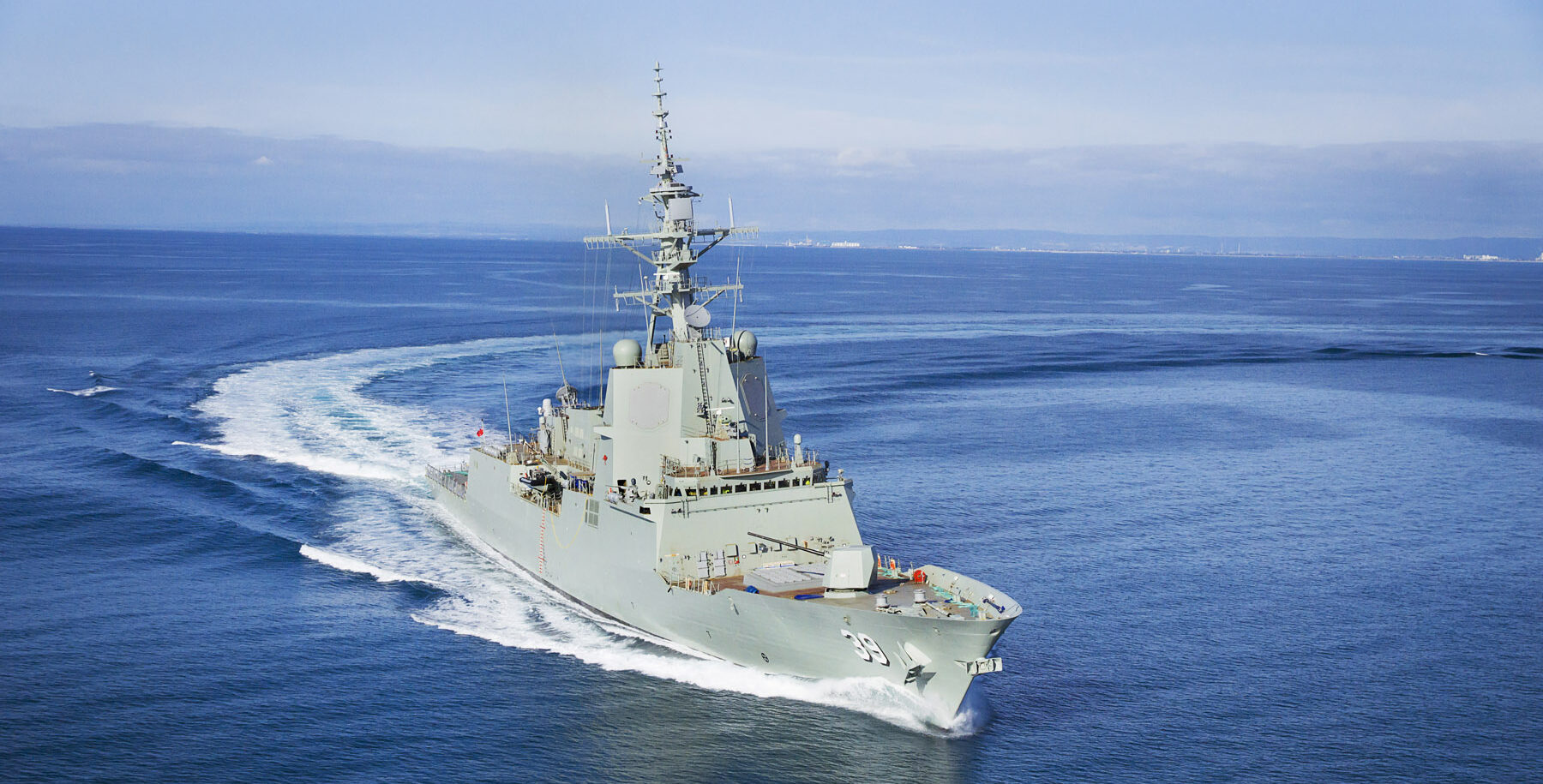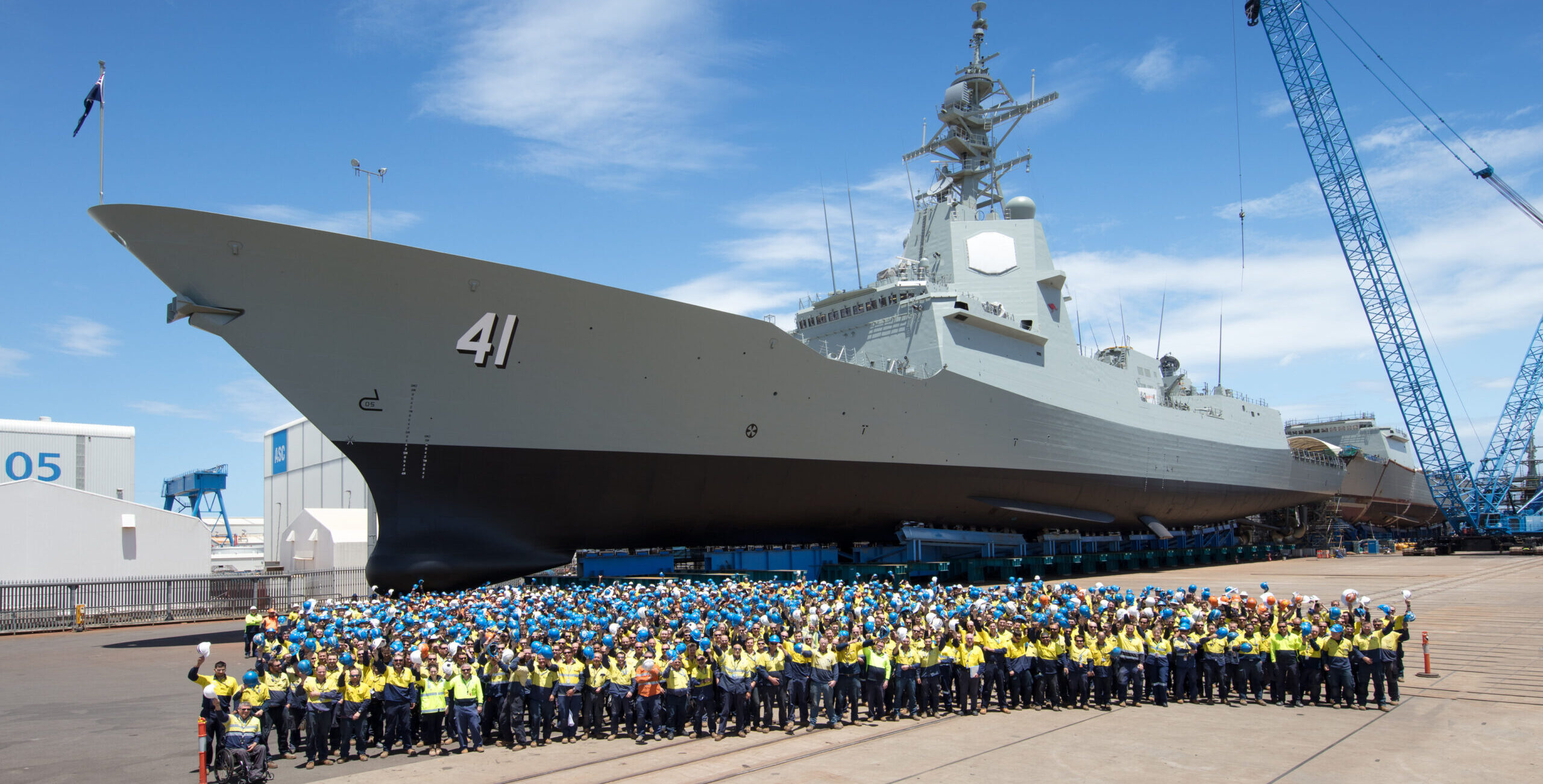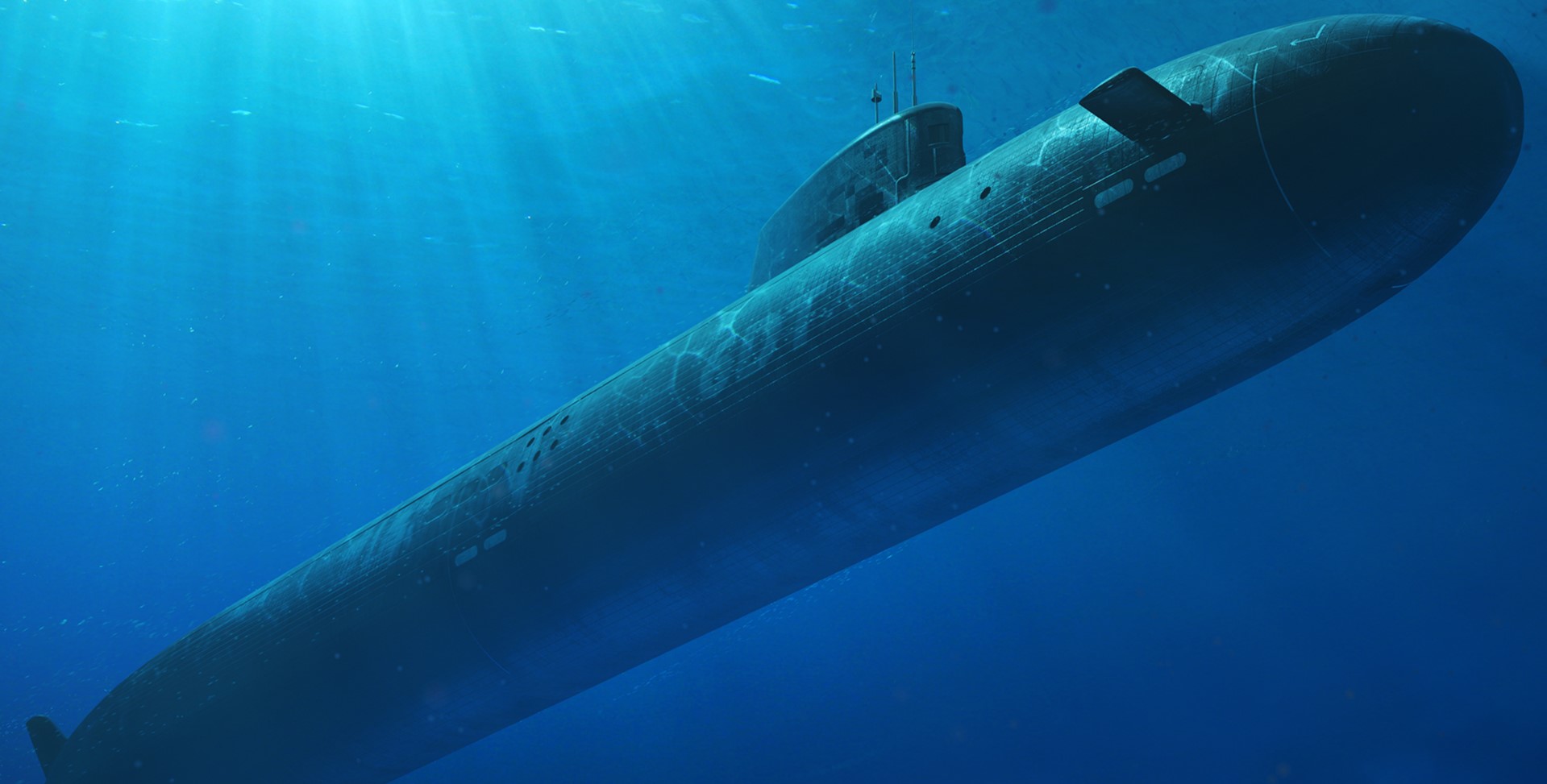From the moment ASC was established in 1985 (then known as Australian Submarine Corporation), it has proudly embraced the deeper purpose of enhancing Australia’s national security by enabling and supporting the Royal Australian Navy’s submarine capability and working to strengthen Australia’s sovereign defence industrial base.
Our Timeline
-
1985
- Chicago Bridge & Iron, Wormald International, the Australian Industry Development Corporation and Kockums join forces to create the Australian Submarine Corporation and tender for the design and build of a new submarine fleet for the Royal Australian Navy.
1987- On 3 June 1987, Australian Submarine Corporation signs with the Australian Government what is, at the time, the largest ever Australian defence contract, to build six Collins Class submarines.
1989- The Prime Minister, the Hon Bob Hawke AC, officially opens Australian Submarine Corporation’s ASC North facility at Osborne, South Australia, where the Collins Class fleet will be built.
1990- The six Collins Class submarines are named in honour of Royal Australian Navy personnel who served with distinction: HMAS Collins, Farncomb, Waller, Dechaineux, Sheean and Rankin.
- Construction of the first Collins submarine, HMAS Collins, commences at Osborne, South Australia.
- James Hardie Industries acquires a shareholding in Australian Submarine Corporation, while two previous shareholders exit, making the company 51% Australian-owned and 49% Swedish-owned.
1992- Australian Submarine Corporation begins providing curriculum development and training services to the Royal Australian Navy’s Submarine School at HMAS Stirling, Garden Island, Western Australia.
1996- Australian Submarine Corporation delivers the first Collins Class submarine, HMAS Collins, to the Royal Australian Navy.
- The company expands its Henderson, Western Australia, facilities to enable Collins Class in-service support and begins undertaking sustainment activities.
1997- Australian Submarine Corporation delivers the second Collins Class submarine, HMAS Farncomb, to the Royal Australian Navy.
1999- Australian Submarine Corporation delivers the third Collins Class submarine, HMAS Waller, to the Royal Australian Navy.
2000- Australian Submarine Corporation delivers the fourth and fifth Collins Class submarines, HMAS Dechaineux and Sheean, to the Royal Australian Navy.
- The Australian Government acquires the remaining portion of Australian Submarine Corporation, making it a fully Australian Government-owned company.
2002- Australian Submarine Corporation engages General Dynamics Electric Boat (US) as a capability partner to support transitioning into Collins Class sovereign design authority and sustainment roles.
2003- Australian Submarine Corporation delivers the sixth and final Collins Class submarine, HMAS Rankin, to the Royal Australian Navy.
- Australian Submarine Corporation signs a Through-Life Support Agreement with the Australian Government for the Collins fleet’s ongoing design, maintenance and enhancement.
2004- Australian Submarine Corporation changes its name to ‘ASC Pty Ltd’, reflecting the company’s broadening plans for future business.
- ASC completes its first Collins Class refit, or Full-Cycle Docking, for HMAS Farncomb.
- The Royal Australian Navy accepts the six Collins Class submarines’ ‘operational release’, formally accepting the boats into service and acknowledging that they meet defined operational capabilities.
- ASC establishes shipbuilding operations.
2005- ASC completes HMAS Collins‘ Full-Cycle Docking.
- ASC signs a new contract with the Royal Australian Navy to continue delivering submariner training.
- ASC is selected as shipbuilder for Australia’s Hobart Class Air Warfare Destroyer program as part of a multi-party ‘AWD Alliance’ established by Defence.
- ASC becomes the Collins Class design authority.
- ASC wins an Engineers Australia Excellence Award.
2006- ASC collaborates with Defence and the University of Adelaide to establish a Master of Marine Engineering degree.
- ASC collaborates with Defence, the University of South Australia, BAE Systems and Saab Australia to establish a Master of Military Systems Integration degree.
- ASC completes design work for its new submarine maintenance facility in Western Australia.
2007- ASC completes HMAS Waller’s Full-Cycle Docking, which includes replacing the boat’s combat system and upgrading its Mark 48 heavyweight torpedo capability.
- ASC enters the AWD Alliance-based Target Incentive Agreement to deliver three Air Warfare Destroyers to the Royal Australian Navy.
- ASC is awarded the Australian Institute of Project Managers’ national Project of the Year and Best Defence/Aerospace Project for HMAS Waller’s Full-Cycle Docking.
2008- ASC West, a $35m submarine maintenance facility, is opened at Henderson, Western Australia.
- Construction begins on ASC’s Air Warfare Destroyer shipyard at ASC South, Osborne.
- ASC collaborates with Defence and the University of South Australia to establish a Graduate Certificate in Project Management.
- ASC is named State Employer of the Year by the Defence Reserves Support Council.
2009- A large group of ASC’s Air Warfare Destroyer staff move to the newly completed ASC South shipyard administration building.
- BAE Systems Australia Defence (Port Melbourne) and Forgacs (Newcastle) are confirmed as block subcontractors for the Air Warfare Destroyer project.
2010- ASC’s $120m Air Warfare Destroyer shipyard is officially opened at ASC South, Osborne.
- ASC completes HMAS Dechaineux’s Full-Cycle Docking.
2012- The Australian Government establishes the Coles Review into the Collins Class submarine fleet’s sustainment, to be conducted by international submarine expert John Coles.
- ASC signs a new In-Service Support Contract with the Australian Government for the Collins fleet’s ongoing sustainment and maintenance.
- ASC completes HMAS Sheean’s first Full-Cycle Docking.
- A keel laying ceremony is held for the first Air Warfare Destroyer, HMAS Hobart.
2013- Following Coles Review recommendations, ASC launches a program of reforms and innovations to reduce Full-Cycle Dockings from three years to two.
- ASC completes the first maintenance activity under the new In-Service Support Contract with the Australian Government – a Certification Extension Docking of HMAS Farncomb – ahead of time.
- Masts and blocks are delivered to ASC South for the first and second Air Warfare Destroyers, HMAS Brisbane and Hobart.
2014- ASC commences HMAS Farncomb’s first two-year Full-Cycle Docking at ASC North, Osborne, using a new Maintenance Support Tower developed to deliver significant efficiencies.
- For the first time, ASC undertakes hull cuts on a Collins Class submarine (HMAS Collins) to enable the boat’s main motor and diesel generators to be removed, refurbished, tested and reinstalled.
- ASC begins using its newly constructed off-boat Diesel Generator Test Facility, which simulates at-sea conditions; the facility leads to significantly improved diesel-generator reliability.
2015- The first Air Warfare Destroyer, HMAS Hobart, is launched.
- Having taken on supply chain management responsibility following the Coles Review, ASC holds the first Collins Class Supply Chain Forum, aiming to increase Australian industry content.
- The ASC West workforce expands to greater than 300 and commences more complex maintenance activities as part of Coles Review reforms.
2016- ASC completes the first two-year Full-Cycle Docking, of HMAS Farncomb, at ASC North, Osborne, demonstrating the company’s ability to achieve world-benchmark submarine availability.
- ASC wins Engineers Australia (SA) Malcolm Kinnaird Excellence and Project Management awards.
- The Australian Government describes the Collins Class submarine sustainment program as an ‘exemplar project’ upon release of the Beyond Benchmark report by Coles Review author John Coles.
- ASC is again named State Employer of the Year by the Defence Reserves Support Council.
2017- Luerssen Australia is selected to design the SEA 1180 Offshore Patrol Vessel Program, with ASC to build the first two vessels in South Australia.
- A $12.5m upgrade to ASC West is officially opened, featuring an innovative maintenance support tower and sky-bridge to enhance submarine maintenance efficiency and productivity.
- ASC delivers the first Air Warfare Destroyer, HMAS Hobart, to the Royal Australian Navy.
2018- ASC Shipbuilding is selected as prime contractor for the Hunter Class Future Frigate program. ASC Shipbuilding subsequently separates from ASC Pty Ltd, becomes a BAE Systems Australia subsidiary and is later renamed BAE Systems Australia Maritime.
- ASC delivers the second Air Warfare Destroyer, HMAS Brisbane, to the Royal Australian Navy.
- ASC completes HMAS Collins’ two-year Full-Cycle Docking.
- The Royal Australian Navy extends ASC’s submariner training services contract.
- ASC commences construction of the first Arafura Class Offshore Patrol Vessel, with prime contractor/designer Luerssen Australia.
2019- ASC participates with the Royal Australian Navy in a keel laying ceremony for the first Arafura Class Offshore Patrol Vessel, with ASC the shipbuilder to prime contractor Luerssen Australia.
- ASC and the University of Adelaide update the Master of Maritime Engineering, with ASC experts providing real-world teaching across submarine disciplines.
- ASC expands its relationship with major collaborators, including Naval Group, Jeumont Electric, Schneider Electric, Babcock, Penske Power Systems, PMB Defence and Saab Kockums.
2020- ASC delivers the third and final Air Warfare Destroyer, HMAS Sydney, to the Royal Australian Navy.
- ASC completes HMAS Waller’s two-year Full-Cycle Docking.
- ASC signs a framework agreement with Naval Group Australia to train Naval Group-linked graduate engineers over a two-year period, as part of ASC’s wider Graduate Program.
- ASC participates with the Royal Australian Navy in a keel laying ceremony for the second Arafura Class Offshore Patrol Vessel, with ASC the shipbuilder to prime contractor Luerssen Australia.
2021- The Australian Government announces that ASC will extend the service life of each Collins Class submarine by 10 years through the Life of Type Extension project.
- Following cancellation of the Attack Class Submarine Program, the Australian Government establishes the Sovereign Shipbuilding Talent Pool – and appoints ASC to manage it – to retain, grow and develop Australia’s shipbuilding workforce.
- ASC launches its first Reconciliation Action Plan, ‘Reflect’.
2022- ASC’s obligations as lead shipbuilder on the Hobart Class Air Warfare Destroyer program are formally completed with the close-out of the Alliance-based Target Incentive Agreement.
- ASC’s implementation of the Life of Type Extension for all six Collins Class submarines is confirmed.
2024- ASC selected by the Australian Government as Sovereign Submarine Sustainment Partner for conventionally armed, nuclear-powered submarines in Australia.
- ASC selected by the Australian Government as Sovereign Submarine Partner for the construction of Australia’s SSN-AUKUS conventionally armed, nuclear-powered submarines, through an incorporated Joint Venture with BAE Systems.
- ASC selected by the Australian Government to manage supply chains for the sustainment of conventionally armed, nuclear-powered submarines in Australia, and – with BAE Systems – for the SSN-AUKUS build.
ASC acknowledges the Traditional Owners of the lands and waters on or near our operations in WA and SA. We pay our respects to Elders past, present and emerging, and to all Aboriginal and Torres Strait Islander peoples.
- © Copyright 2025 ASC
- Privacy
- Whistleblower Process
- Sitemap
- Website credit
